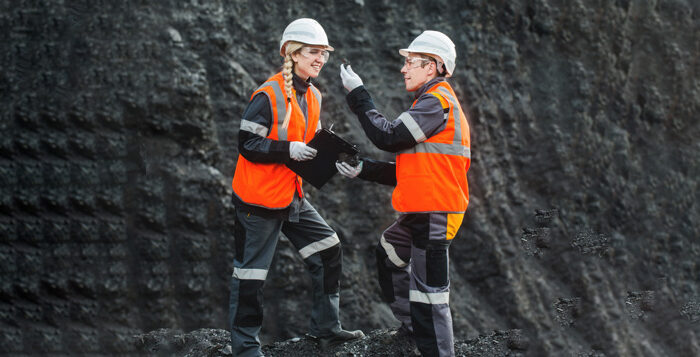Choosing the Channel: Comparing the Costs and Effectiveness of Advertising

By T. L. Headley, MBA, MA, The Headley Company Energy Communications & Research
So, how much does it cost?”
For most people, that question cuts to the bottom line. For a good salesperson, that is the signal to close the sale. It tells them that the customer knows they need the product or service and now it is just a question of value. It is saying, “I need this but I don’t know if I can afford it.”
It is the essential question for everyone. How do you measure value? Is it just a matter of price? Of course not. There are many factors that go into determining value.
Getting the most bang for your buck is important to any individual or company, but it is vital to the nation’s coal industry. With less money available for full-time communications and public relations departments, investment in advertising is more important than ever to make the best use of declining staffing resources.
In advertising, the essential question is one of reach – how many people will hear a message for each dollar spent? The following article discusses the relative cost of various media, as well as the importance of cost-effective and highly-targeted advertising opportunities through Association membership networks like the ACC.
Radio
In the previous article in this series, the example of the strategies used by the West Virginia Coal Association to grow the Friends of Coal group were discussed. Chief among them in the early years was the use of effective radio advertising, specifically targeting the West Virginia University football and basketball games as well as news broadcasts on the West Virginia Radio Corporation network. The use of this network made the Friends of Coal a household name in West Virginia and the jingle “Coal is West Virginia” was as well known throughout the state as any major brand.
Some of the primary advantages of radio are price, geographic targeting, some demographic targeting is possible and the speed at which a message can be created. Disadvantages include limited reach, the lack of certainty that advertising is heard or acted upon and the lack of ability to tailor marketing to specific demographic profiles.
As can be seen in the graphic, radio advertising costs vary greatly by market but are relatively cheap in even the most expensive markets.
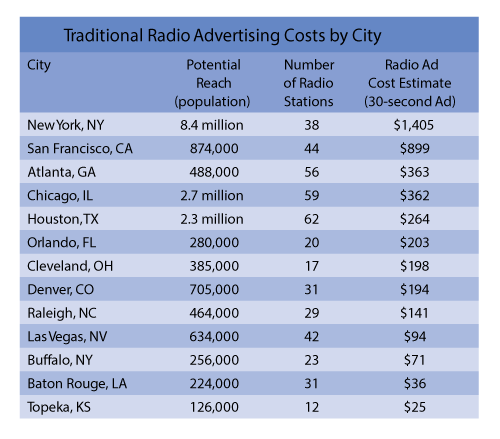
Social Media Advertising
Advertising can be purchased on social media using several different measures, but the primary two are cost per click and cost per impression.
In terms of cost per impression, the customer chooses how many people they wish to reach in multiples of 1,000 and pays for them using the rate charged by the platform. The platform guarantees their ads will be seen by the number of people the buyer determines. For example, if the American Coal Council puts out a message they want one million people to see, the cost for doing so on Facebook would be $7,190. As you can see in the chart, the rates for most of the platforms are fairly consistent. The only outlier is Pinterest, which is primarily a photo service with a large footprint that is highly concentrated with women over 18 years of age.
Cost per click is exactly that. It is how much you pay for each time a person sees the ad and takes action on it. This allows the buyer to know that the ads have been seen and actually acted upon. For example, a company that wants to reach a number of people who will click on a “donate” or “subscribe” button, only pays for the number of people who actually take that action.
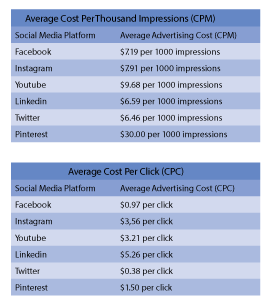
But it goes further. Using the tools available for advertisers, these ad buys can be targeted to very specific groups – down to cities, demographic profiles, buying patterns, interests, etc. As you can imagine, that type of pinpoint marketing can make your messages very effective in a business to consumer marketing approach.
Publications
Newspapers and magazine publications offer a wide range of options in terms of cost, audience targeting, ad size and several other factors. As you can see in the following chart, some newspapers have significant reach within their specific regions. Only a few publications can claim a truly national reach – USA Today, the Washington Post, New York Times and Wall Street Journal as well as the national reach of American Coal, which marked its 20th anniversary in 2023 and has built a reputation as the nation’s highly regarded and well-read coal industry publication.
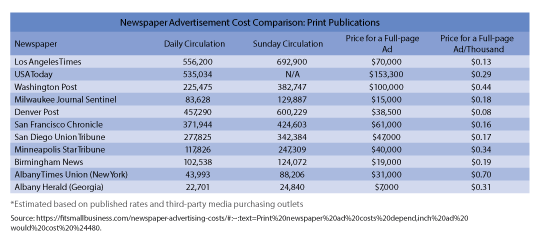
As you can see, the list of top magazines includes ones with very specific, and large-scale audiences. Association advertising doesn’t always share the size of the audience of major print magazines but the specificity – and value from it – are shared entirely.
Association Marketing Opportunities
While the relative ability to directly target the general public with specific age or location demographics is a benefit to radio and social media marketing, the strategic possibilities are far greater with advertising and sponsorship opportunities offered through Association networks like the American Coal Council. It’s this type of business to business marketing that will directly connect your business (products, services, equipment and/or other coal industry solutions) with actual decision-makers who are doing business across the coal supply chain today.
Regardless of the scale or readership of another marketing campaign, Association marketing enables access to an immediate audience of potential customers that others cannot match, and at a fraction of the cost. Companies can save valuable time and money by honing their campaign toward a relevant audience – not one that is a general, massive audience with a limited scope of potential customers.
The time and financial resources saved can be pushed toward repeated campaigns, too, with Association ad rates much more conducive to long-term advertising. This is crucial to solidify your position as a preferred choice among members within an association network. Consistent, consecutive exposure is paramount. As they say, repetition is the key to memory. The affordability of marketing opportunities through your association is the cost-effective pathway to remain present and reach potential customers at different pain points and needs throughout the year, which is different for many businesses.
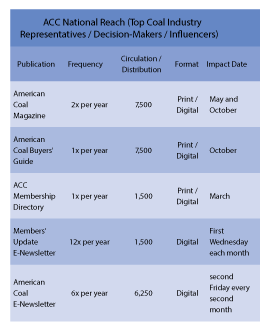
A strong, well-planned advertising program is a vital part of any effort to improve the image of the coal industry and tell its story. It should be multi-faceted but focus on reaching key audiences. As the industry’s budget for outreach efforts contracts, cost-effective marketing options with the ACC to reach new customers are more important than ever.
The next article in this series will take a look at developing effective messaging for the industry. What types of messages cut through the clutter of the marketplace and the internet?
Upcoming: Part II: Developing the Message
T. L. Headley, MBA, MA, is founder of The Headley Company Energy Communications & Research



